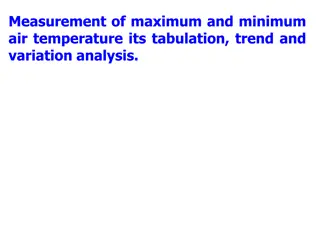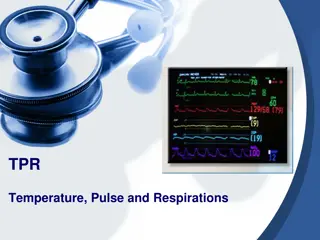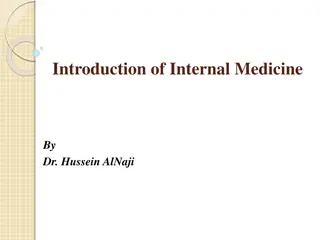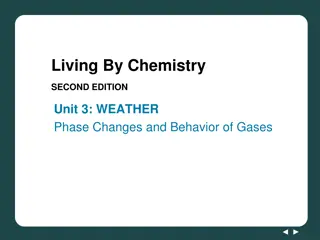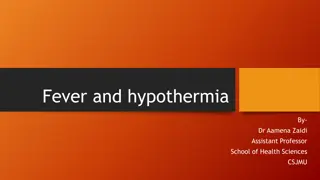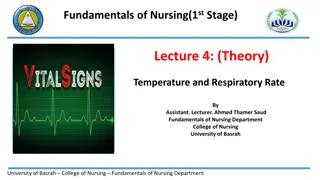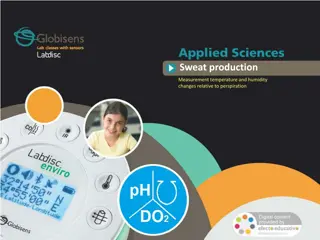Understanding Body Temperature Regulation
Explore how the body maintains its internal temperature through mechanisms such as correcting overheating and overcooling, the role of thermoreceptors, and voluntary responses that help control temperature. Discover the importance of regulating internal body temperature for optimal enzyme-catalyzed reactions, the risks of temperatures above and below normal, and the analogy of a water bath thermostat. Delve into the concept of homeostasis through feedback systems and the three basic components involved. Learn about the key role of the hypothalamus as a thermostat in the body and the functions of vasoconstriction and vasodilation in temperature control.
Download Presentation

Please find below an Image/Link to download the presentation.
The content on the website is provided AS IS for your information and personal use only. It may not be sold, licensed, or shared on other websites without obtaining consent from the author. Download presentation by click this link. If you encounter any issues during the download, it is possible that the publisher has removed the file from their server.
E N D
Presentation Transcript
Temperature Regulation By the end of the lesson you should know How the body corrects overheating How the body corrects overcooling What thermocreceptors do? What volutary responses are carried out to control temperature
Why do we need to regulate: Internal body temperature To provide the optimum conditions for enzyme-catalysed reactions to be carried out.
Body Temperature Normal internal body temperature is 370C. Temperatures above this: denature enzymes and block metabolic pathways Temperatures below this: slow down metabolism and affect the brain.
Water Bath Temperature set on thermostat Too cool? Heater kicks on and temperature goes up Too warm? Heater stays off until bath cools down Constant checking and turning on and off
Control of homeostasis through feedback Feedback system- cycle of events in which the status of a body condition is continually monitored, evaluated, changed, re-monitored, re-evaluated, etc.
3 basic components of a feedback system 1) receptor sensor that responds to changes (stimuli) 2) control centre sets range of values, evaluates input and sends output 3) effector receives output from control centre and produces a response
Body Temperature Control The hypothalamus acts as a thermostat and receives nerve impulses from heat and cold thermoreceptors in the skin. There are also receptors in the hypothalamus- called central thermoreceptors. These detect changes in blood temperature.
Vasoconstriction and Vasodilatation
Correction of overheating Detected by thermoreceptors in the hypothalamus. Causes vasodilation. Sweating 1. 2. 3.
Cooling down When it's hot and you need to cool down, muscles at each hair relax. Hairs lie close to the skin. Air does not act as an insulating layer.
Sweating How does it work? Heat energy in the body is used to convert the water in sweat to vapour cooling down the body.
Correction of overcooling Detected by thermoreceptors in the hypothalamus. Causes vasoconstriction. Decreased sweating Shivering 1. 2. 3. 4.
Keeping warm When it's cold, the muscle contracts pulls the hair up. A layer of warm air accumulates around the hair and insulates the organism. Heat retained
Shivering How does it work?
Voluntary responses In humans the cerebrum makes people feel cold or hot. They can then e.g. put on more clothes, eat a hot meal, exercise etc as appropriate.
This powerpoint was kindly donated to www.worldofteaching.com http://www.worldofteaching.com is home to over a thousand powerpoints submitted by teachers. This is a completely free site and requires no registration. Please visit and I hope it will help in your teaching.






